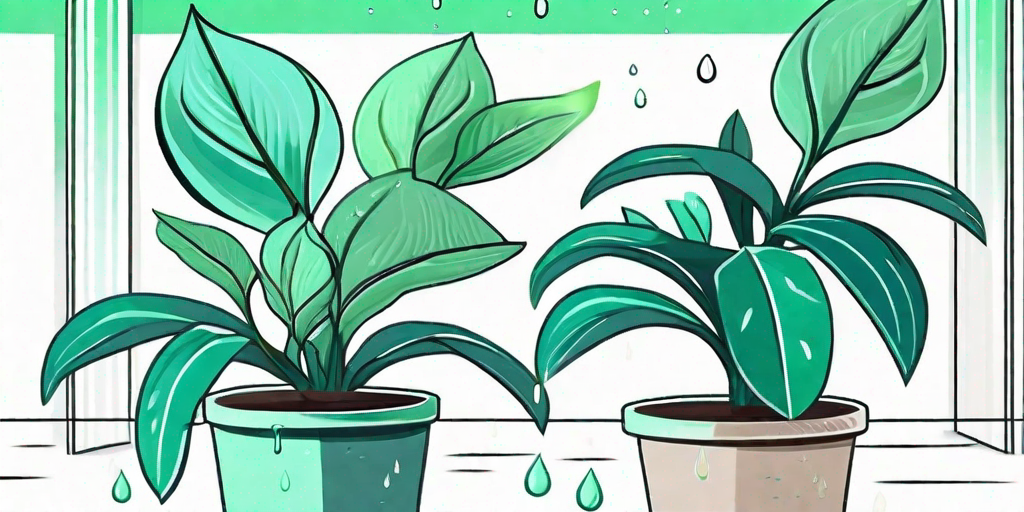
Watering your rubber plant can feel like a Herculean task. Too much water, and you're drowning the poor thing. Too little, and you're leaving it high and dry. But fear not, green-thumbed friends. This guide is here to help you navigate the tricky waters of rubber plant hydration. So, put on your gardening gloves, grab your watering can, and let's dive in.
The Importance of Hydrating Your Rubber Plant
The rubber plant, or Ficus elastica, if you want to get all scientific about it, is a popular houseplant for a reason. It's resilient, it's attractive, and it's a great listener. Okay, that last part might not be scientifically proven, but we all know plants make great confidants. But like any good friend, your rubber plant needs care and attention, especially when it comes to hydration.
Water is to a rubber plant what coffee is to a Monday morning. It's essential for its survival. Water helps transport nutrients from the soil to the plant's cells, aids in photosynthesis, and keeps the plant's structure firm and upright. Without adequate water, your rubber plant might start to look a little droopy, like it's had a rough night out.
How to Hydrate Your Rubber Plant
Now that we've established the importance of watering your rubber plant, let's get down to the nitty-gritty. How exactly do you go about hydrating your leafy friend? Well, buckle up, because we're about to embark on a thrilling journey into the world of plant hydration.
When to Water Your Rubber Plant
Unlike your pet dog, your rubber plant doesn't need to be watered every day. In fact, overwatering can lead to root rot, which is as unpleasant as it sounds. Instead, you should aim to water your rubber plant when the top inch of soil feels dry to the touch. This could be once a week, once every two weeks, or once a month, depending on the season and the conditions in your home.
And remember, your rubber plant is not a camel. It can't store water for long periods, so don't leave it too long between drinks. If you're unsure whether to water, it's usually better to err on the side of caution and give it a little drink. Just don't go overboard. Your rubber plant likes to stay hydrated, but it's not trying to win a drinking contest.
How Much Water to Give Your Rubber Plant
When it comes to watering your rubber plant, it's not a case of 'the more, the merrier'. Too much water can lead to root rot, while too little can leave your plant parched. A good rule of thumb is to water until you see water coming out of the drainage holes in the bottom of the pot. This ensures that the water has reached the root zone, which is where your plant needs it most.
But remember, your rubber plant doesn't like to sit in water, so make sure to empty any excess water from the saucer after watering. Think of it like this: your rubber plant likes a good drink, but it doesn't want to sit in a puddle. It's not a duck, after all.
Common Mistakes to Avoid
Watering a rubber plant might seem straightforward, but there are a few common mistakes that can trip up even the most seasoned plant parents. But don't worry, we're here to help you avoid these pitfalls and keep your rubber plant happy and hydrated.
Overwatering
As we've mentioned, overwatering is a common mistake that can lead to root rot. If your rubber plant's leaves are turning yellow or brown and falling off, you might be overdoing it on the H2O. Remember, your rubber plant likes to drink, but it doesn't want to drown.
Underwatering
On the flip side, underwatering can also cause problems. If your rubber plant's leaves are wilting or curling, it might be crying out for a drink. Don't be that plant parent who forgets to water. Set a reminder on your phone if you have to. Your rubber plant will thank you.
FAQs
Got questions? We've got answers. Here are some of the most frequently asked questions about watering rubber plants.
Why are my rubber plant's leaves turning yellow?
Yellow leaves can be a sign of overwatering. Try cutting back on the H2O and see if your plant's condition improves.
How often should I water my rubber plant in winter?
In winter, your rubber plant will likely need less water as it enters a dormant phase. Wait until the top two inches of soil are dry before watering.
Can I use tap water to water my rubber plant?
Yes, you can use tap water, but let it sit out overnight first to allow any chlorine to evaporate.
Conclusion
And there you have it, folks. The ultimate guide to hydrating your rubber plant. Remember, watering is not a one-size-fits-all task. It requires attention, care, and a little bit of intuition. But with these tips in mind, you'll be well on your way to becoming a rubber plant hydration expert. So go forth, water wisely, and watch your rubber plant thrive.















